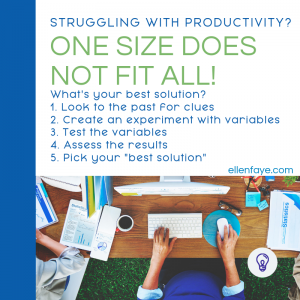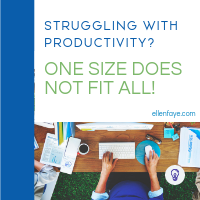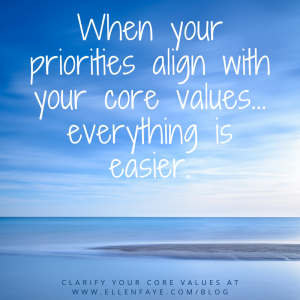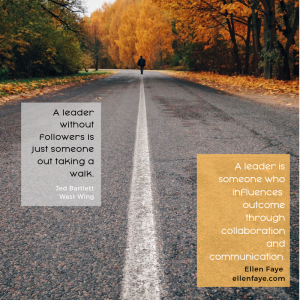26 Apr Productivity That Fits How You Are Wired
 Have you ever wondered why that book on time management didn’t help?
Have you ever wondered why that book on time management didn’t help?
What about that article espousing the top 5 things you must do each morning to have a productive day?
And how about that author who focuses on the one great thing you must do to be successful?
Have you thought “what’s wrong with me – that will never work?”
I have good news for you. Productivity is not one size fits all. These “experts” are talking about what works for them. They are sharing the secret to their success. They are not sharing the secrets to your success. They are not considering your unique needs; your brain wiring based on your life experiences, your learning style, your body-clock, or your temperament.
How can they even imagine what will work for you?
The one thing I can tell you with absolute certainty, after spending the last 20 years helping clients get more organized and be more productive, is that what works for one person won’t necessarily work for another. There are many right approaches.
The secret is in actually figuring out what the best “right approach” is for you.
We look for clues:
- What has worked for you in the past?
- What doesn’t work for you?
- When have you felt most in control?
And then we create a strategy based on those clues. And we don’t stop there. We test the strategy. I tell my clients to think of themselves as a science experiment. We test and we tweak until we end up with a “best solution” that really fits.
Meet my client Margie (not her real name!) Margie has ADD and understands the value of exercise in keeping her brain functioning optimally. She came to me wanting to create a structure so that she could get up each morning at 5 am and exercise before her work day began. She had read that this was the one best thing she could do to manage her ADD; her doctor agreed.
However, Margie didn’t fit the norm. She worked from home, she liked to work at night, and often got her most important work done in the wee hours of the morning. Margie hated mornings and hated exercise more.
I had this suspicion that exercising at 5 am wasn’t Margie’s best solution.
- We discussed when she’d been successful exercising in the past (when her daughter was young and she’d drop her at preschool and exercised right after.)
- We learned that having a time-driven deadline prior to exercising was helpful.
- And we talked about how badly she felt about herself when she pressed the snooze button at 4:45 am and didn’t get out of bed, though she couldn’t really go back to sleep.
Alas, Margie wanted to try. So, we did. However, I asked her to try 5 different times to exercise and to track her success. This is what we learned:
| Exercise Success | Time of Day to Exercise | # of workouts in one-week period |
| Week 1 | 5 am | zero |
| Week 2 | 9 am | 1 |
| Week 3 | Noon | 1 |
| Week 4 | 4 pm | 3 |
| Week 5 | 7 pm | zero |
Turns out 4 pm was Margie’s optimal workout time. She wanted to have dinner with her family at 6:30 pm. Working out at 4 gave her time afterwards to shower and get dinner on the table. That time-driven deadline of a 6:30 pm dinner helped motivate Margie to get started exercising at 4 pm. She found the late-afternoon break refreshing and that she actually enjoyed her workout. And the extra couple of hours sleep in the morning was really helpful all around. When the system fit it was easy to implement and easy to stick with.
One-size did not fit Margie? Does one-size fit you? Is there something you should rethink that might fit you better? Try the following 5-step process to create your best solution:
- Look to the past for clues
- Create an experiment with different variables
- Test the variables
- Assess the results
- Pick your “best solution”
I’d love to hear what you learned.














